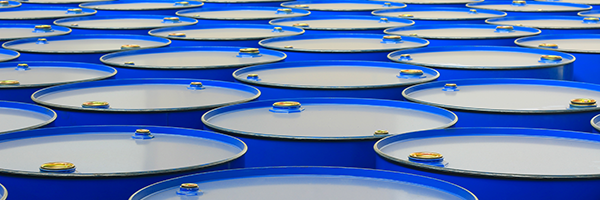
May 4, 2023 | Daily JAM, Short Term |
For a few hours on Wednesday, stocks behaved as if the regional banking crisis was over and as if the Federal Reserve was about to not only end its interest rate increases but also begin cutting interest rates. Then Fed chair Jerome Powell reminded investors and traders that a pause in interest rate increases didn’t mean the Fed was about to pivot immediately to cutting interest rates. And investors and traders decided that the regional bank crisis might not be over if PacWest Bancorp (PACW) was exploring “alternatives” and if Western Alliance Bancorporation (WAL) might be looking for a deal. (The bank has denied that speculation.) Today, May 4, the fear is back.

May 2, 2023 | Daily JAM, KRE, Morning Briefing, Short Term, Volatility |
Yes, it’s a volatile market. Yesterday, May 1, the take from the Wall Street talking heads and JPMorgan Chase CEO Jamie Dimon was that the banking crisis (or at least this stage of it, to be fair to Dimon) was over. Today, May 2, the fear is that the crisis isn’t over. Regional bank stocks have plunged again with Western Alliance Bancorporation (WAL), for example, down 17.12% for the day as of 3 p.m. New York time. The regional bank ETF, the SPDR S&P Regional Banking ETF (KRE) is down 6.61%. That all means that the August 18 Put Options with a strike price of $41 that I bought yesterday at $2.55 are selling at 3 p.m. today at $4.72. Counting a slight gain from yesterday’s action after the buy, these Puts are up 85% in a day. I’m taking that gain today and selling this position out of my Volatility Portfolio

April 27, 2023 | Daily JAM, IWM, RWM, Short Term, Special Reports |
I’m expecting modestly positive economic news in the next few days. Which will, in my opinion, create a low-risk opportunity to make big gains by going short this market in order to profit as stock prices fall. I’m looking to put the first of those shorts in place right now. With the rest to go into place in the days after the Federal Reserve meets on Wednesday, May 3. In this Special Report, I’ll explain this perhaps initially counter-intuitive call on short-term market direction and give you the details on five of my favorite shorts for profiting in this market. With the first short pick today

April 18, 2023 | COST, Daily JAM, GDX, GLD, GOLD, KO, Mid Term, PEP, RWM, Special Reports |
10 Picks for the Coming Recession. This one is especially difficult. Not only do I face the usual crystal-ball problem that comes up whenever you try to pick an investment for the future–what’s the macro and micro world going to look like in 6 months or a year from now–but I’ve got two big Recession-specific challenges. First, is there actually going to be a Recession in 2023? All the signs, in my opinion, point toward a recession in the second and third quarters, but it’s by no means guaranteed that we’ll have the two quarters of negative GDP growth that’s required by the minimal definition of a recession. And what’s the point, you might well ask, of making picks for a coming recession that never arrives? And, second, how bad will this recession be?

April 6, 2023 | Daily JAM, DVN, GDX, GOLD, GOOG, Jubak Picks, Long Term, MSFT, PXD, SCHW |
I will add this post to the end of my post of the entire Special Report today. I’m also posting it here, however, as a stand-alone so you will get notice in your email box that Move #4 has gone up. Here’s what I posted for Move #4.

March 23, 2023 | Daily JAM, Morning Briefing |
Here’s Step #3 in my 5 Steps for the Next 5 Months Special Report

February 16, 2023 | Daily JAM |
Sorry for the delay on my Special Report: “7 AI stocks to Own Now.” The Special Report will be posted Monday

February 2, 2023 | Daily JAM, Special Reports |
It’s been a tough market–and a tough decade looms– but taking smart risks using this strategy can save your retirement portfolio even if you’re over 50. You can do it if you take some risk. Some smart risk. Emphasis on the “smart.” The goal is to find a way to get some extra upside return while keeping your potential downside losses to a minimum. And here are my 10 picks for starting a Save Your Retirement Portfolio.

November 30, 2022 | BHP, Daily JAM, Dividend Income, Special Reports |
You have to do a fair amount of work rearranging the dividend numbers for BHP (BHP) to understand why this diversified commodities producer makes this list. First, throw that 11.02% dividend yield reported on Yahoo Finance and other sources. As part of its corporate strategy of moving away from fossil fuels and investing in expanding existing copper production and in opening its first potash mine (in Canada at a cost of $5.7 billion), BHP sold its petroleum unit. Part of the big “dividend” distribution in fiscal 2021 and 2022 is a result of the company distributing the shares in the purchaser it acquired in payment for that deal to BHP shareholders. Of the $7.11 paid in dividends in fiscal 2022, for example, $3.86 came from the distribution of those shares. If you buy BHP now, you can’t expect a repeat of that distribution of shares. (BHP also sold its U.S. onshore petroleum assets in 2019.) So the question is what dividend payout can you expect from BHP in 2023?

November 21, 2022 | Daily JAM, Special Reports |
I know I’m not getting any older. Just better. And I’d assume that’s true for you too. But sources tell me that Canadians–yes, Canadians–are aging. And that there’s a growing market for retirement living facilities in Canada. According to Statistics Canada, the current supply of long-term care and retirement suites is 450,000. And by 2038 Canada will have a need for an additional 430,000 suites. Sounds like a growth market to me. And right now you can buy units in the Chartwell Retirement Residences Real Estate Investment Trust (CWSRF) with a 7.61% dividend yield.

November 8, 2022 | Daily JAM, Dividend Income, Special Reports |
You might expect this list to be dominated by oil and natural gas producers. You might expect that–but you’d be wrong. Stocks like Pioneer Natural Resources (PXD) and Devon Energy (DVN) certainly pay dividends now high enough t qualify for this list, at 9.86% and 7.50% for the trailing 12 months, respectively, but I don’t think it’s possible to project that level of dividend payout for the 10-year period that I’ve focused on for this strategy. (Which doesn’t mean stocks like these aren’t worth owning on their dividends for the shorter term. In fact, I’m putting together a list of what I’d call current dividend outliers as an extra for this Special Report. These outlier stocks pay very attractive (better than 6% again and sometimes way better than 6%) dividends but the companies don’t have a track record or corporate culture that makes me feel certain about the longevity of this level of payout. Pioneer, for example, pays a 2-part dividend with a core rate and a variable rate depending on revenue and profits. That to me speaks to a company that doesn’t feel able to commit to the current high payout for very long. For a dividend stock with a high payout and a predictably long duration of that level of payout in the energy sector, I’m going to look at pipeline companies, especially those with big exposure to natural gas exports (specifically LNG exports) and the growing CO2 sector.

November 3, 2022 | Daily JAM, Special Reports |
I don’t get stuck in writer’s block often. But it does happen upon occasion. And this Special Report: 5 Safe Dividend Stocks Paying 6% or More is just such an occasion. The good news is that I finally cracked the block today











